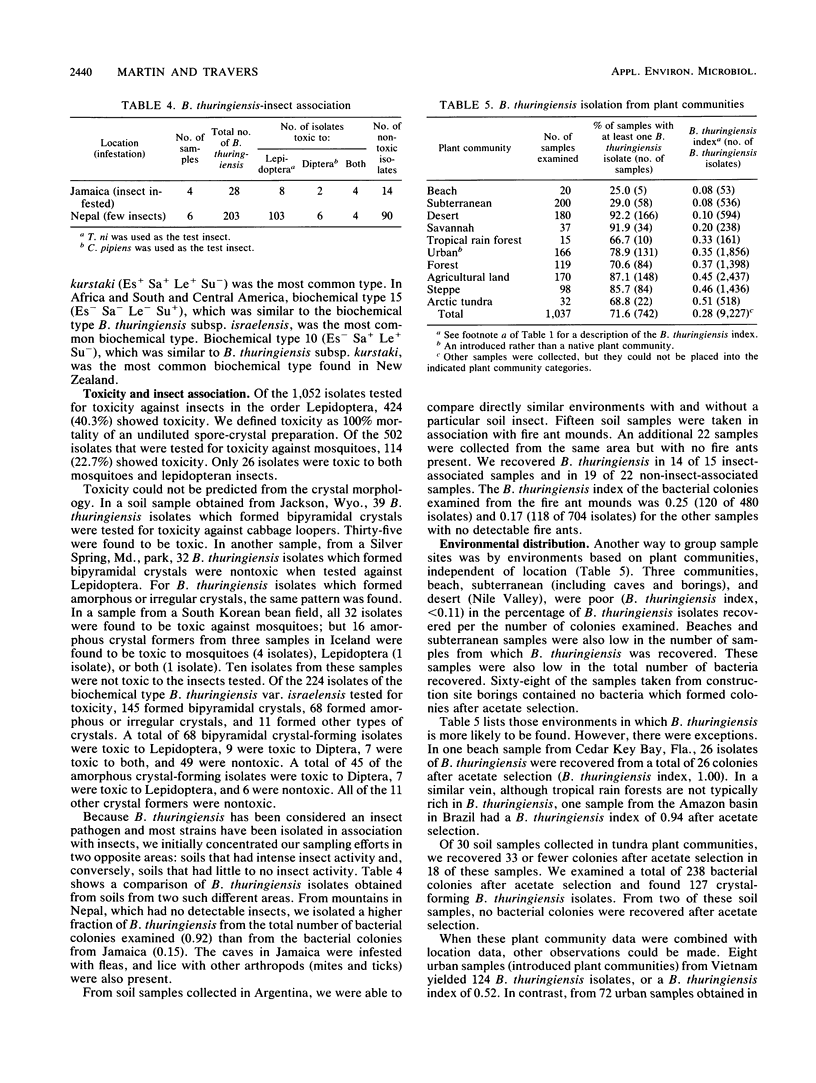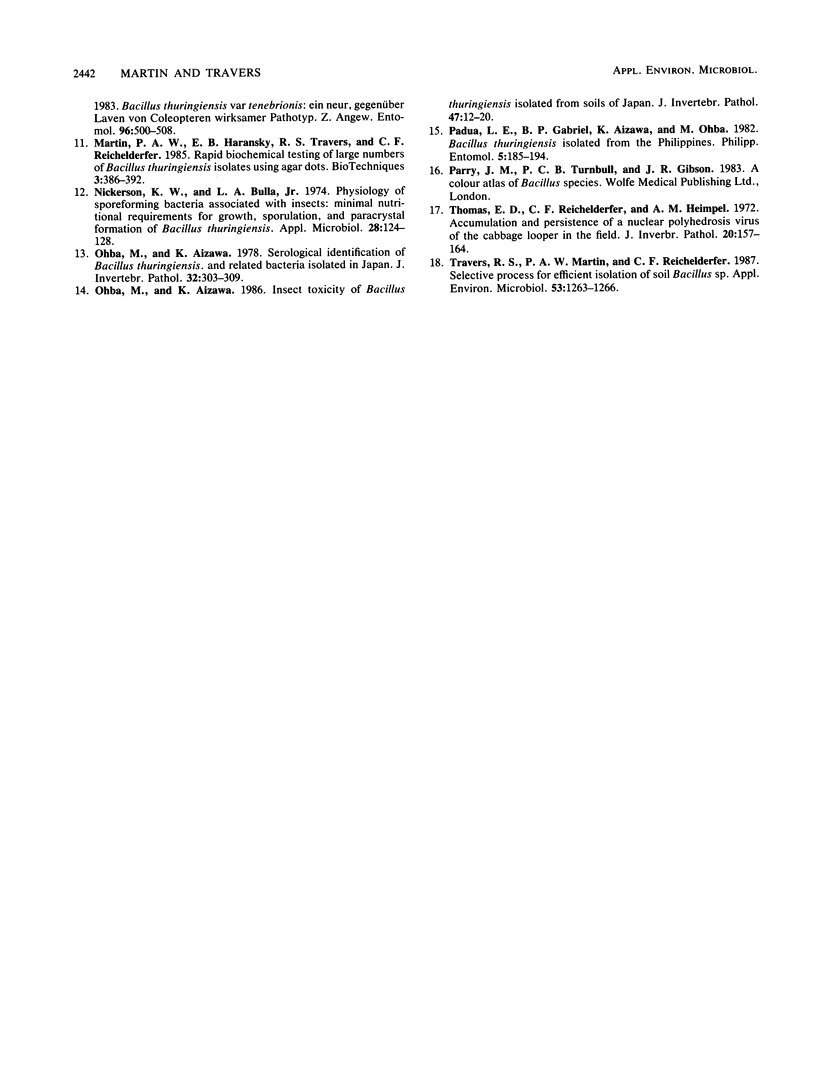Abstract
We found the insect control agent Bacillus thuringiensis to be a ubiquitous soil microorganism. Using acetate selection to screen soil samples, we isolated B. thuringiensis in 785 of 1,115 soil samples. These samples were obtained in the United States and 29 other countries. A total of 48% of the B. thuringiensis isolates (8,916 isolates) fit the biochemical description of known varieties, while 52% represented undescribed B. thuringiensis types. Over 60% (1,052 isolates) of the isolates tested for toxicity were toxic to insects in the orders Lepidoptera or Diptera. Soil samples were collected from various habitats, including those habitats with different numbers of insects. The current presence of insects did not predict the presence of B. thuringiensis in a particular soil sample. B. thuringiensis was most abundant in samples from Asia.
Full text
PDF





Selected References
These references are in PubMed. This may not be the complete list of references from this article.
- DeLucca A. J., 2nd, Simonson J. G., Larson A. D. Bacillus thuringiensis distribution in soils of the United States. Can J Microbiol. 1981 Sep;27(9):865–870. doi: 10.1139/m81-137. [DOI] [PubMed] [Google Scholar]
- Heimpel A. M. A taxonomic key proposed for the species of the "crystalliferous bacteria". J Invertebr Pathol. 1967 Sep;9(3):364–373. doi: 10.1016/0022-2011(67)90072-9. [DOI] [PubMed] [Google Scholar]
- Nickerson K. W., Bulla L. A., Jr Physiology of sporeforming bacteria associated with insects: minimal nutritional requirements for growth, sporulation, and parasporal crystal formation of Bacillus thuringiensis. Appl Microbiol. 1974 Jul;28(1):124–128. doi: 10.1128/am.28.1.124-128.1974. [DOI] [PMC free article] [PubMed] [Google Scholar]
- Travers R. S., Martin P. A., Reichelderfer C. F. Selective Process for Efficient Isolation of Soil Bacillus spp. Appl Environ Microbiol. 1987 Jun;53(6):1263–1266. doi: 10.1128/aem.53.6.1263-1266.1987. [DOI] [PMC free article] [PubMed] [Google Scholar]


